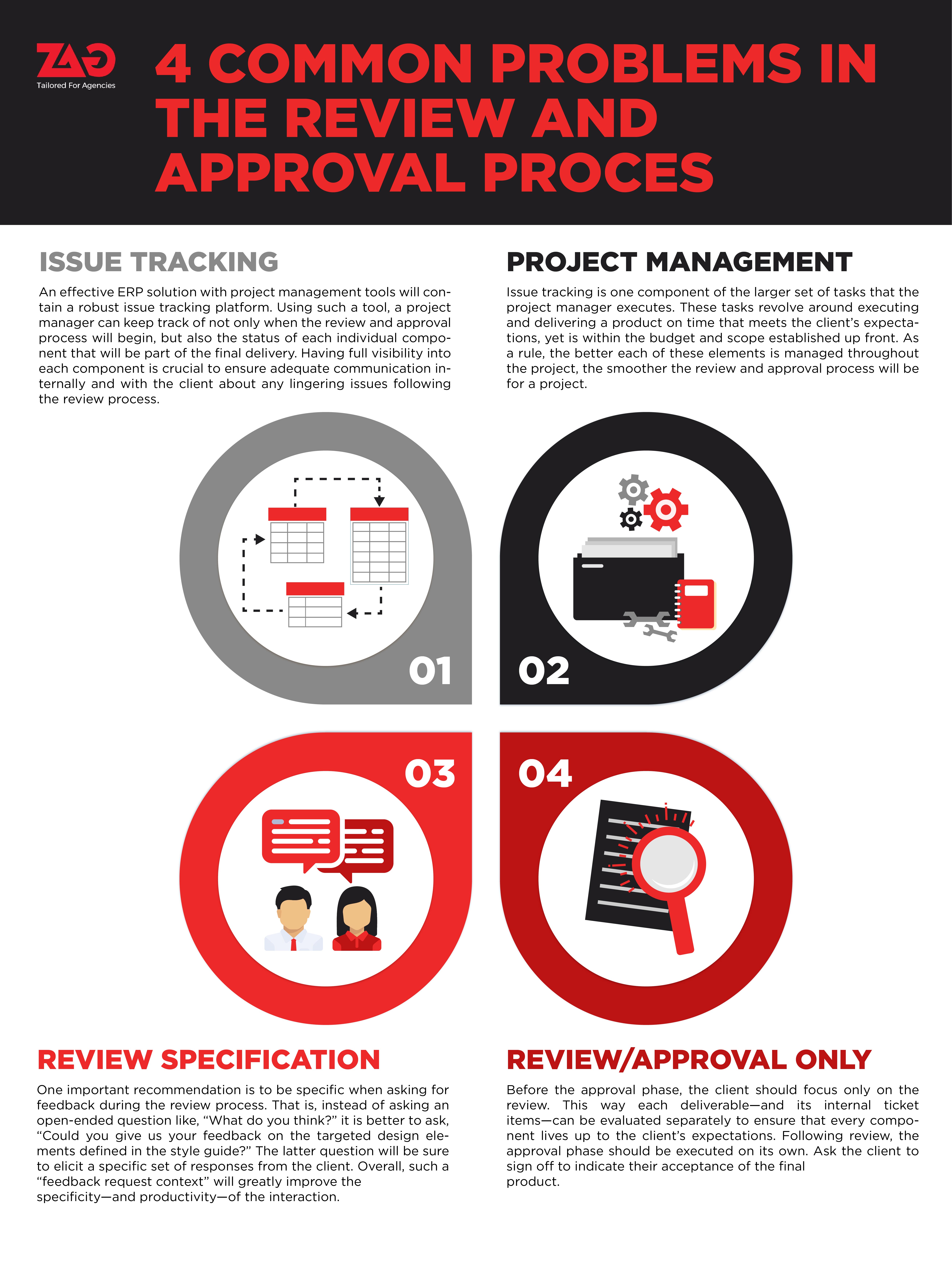
4 Common problems in the Review and Approval Process
The review and approval process is one of the most important parts of every creative project. It allows your clients a final opportunity to offer any critical feedback as they weigh your deliverables against the original project specification. But what exactly goes into this process? And how can your team improve it? Here we’ll look specifically at issue tracking, project management, review specification, and isolating the final approval process.
- Issue Tracking. An effective ERP solution with project management tools will contain a robust issue tracking platform. Using such a tool, a project manager can keep track of not only when the review and approval process will begin, but also the status of each individual component that will be part of the final delivery. Having full visibility into each component is crucial to ensure adequate communication internally and with the client about any lingering issues following the review process.
- Project Management. Issue tracking is one component of the larger set of tasks that the project manager executes. These tasks revolve around executing and delivering a product on time that meets the client’s expectations, yet is within the budget and scope established up front. As a rule, the better each of these elements is managed throughout the project, the smoother the review and approval process will be for a project.
- Review Specification. One important recommendation is to be specific when asking for feedback during the review process. That is, instead of asking an open-ended question like, “What do you think?” it is better to ask, “Could you give us your feedback on the targeted design elements defined in the style guide?” The latter question will be sure to elicit a specific set of responses from the client. Overall, such a “feedback request context” will greatly improve the specificity—and productivity—of the interaction.[1]
- Review/Approval Only. Before the approval phase, the client should focus only on the review. This way each deliverable—and its internal ticket items—can be evaluated separately to ensure that every component lives up to the client’s expectations. Following the review, the approval phase should be executed on its own. Ask the client to sign off to indicate their acceptance of the final product.
April 16, 2018
in ERP, Uncategorized
No Comments
